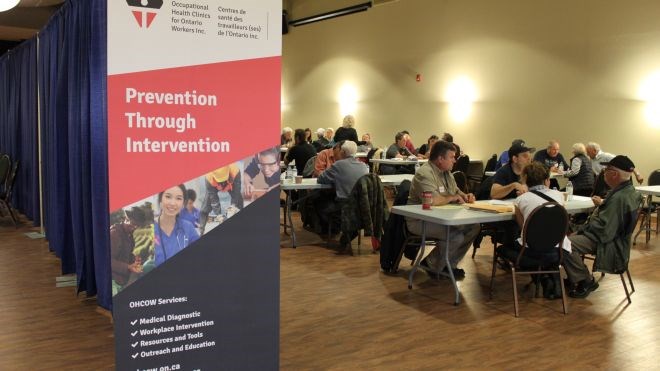Momentum is gathering for the McIntyre Powder Project, with a number of initiatives planned for the new year to continue spreading information about the past use of aluminum dust in Northern mines.
Spearheaded by Janice Martell of Elliot Lake, the McIntyre Powder Project started off as a volunteer registry for miners who had inhaled finely ground aluminum during their tenure at mines across Northern Ontario, where the procedure was practised between 1943 and 1979.
Following a pair of intake clinics in Timmins and Sudbury in 2016, 344 names have been added to the registry, and 300 have been included on a registry of exposed workers created by the Occupational Health Clinics for Ontario Workers (OHCOW), gaining more attention for the work, Martell said.
“It’s been really blowing up — a lot — which is good,” Martell said. “I’m hoping that this (project) doesn’t die.”
Among growing media and public awareness, Martell has been making inroads into the scientific and research communities, gaining traction for the work.
Martell and OHCOW representatives have been invited to speak at the 12th Keele Meeting on Aluminum, taking place March 4 to 8, 2017 in Vancouver, B.C. The biennial meeting gathers together scientific researchers from around the globe to talk about aluminum research.
The initiative is spearheaded by Prof. Chris Exley, of Keele University in Staffordshire, England, who has been studying aluminum for 30 years.
Martell and OHCOW will be “presenting on the findings from the intake clinics and trying to let researchers out there know that we have this database if they want to study it,” Martell said. “Hopefully that will generate the scientific piece of (the project) so that we can really start looking at how these workers were affected.”
Martell has also connected with McMaster University in Hamilton, Ont., where research is being conducted into in vivo aluminum measurement — the measurement of aluminum in bones in the hands — and questions are being asked around whether those measurements can be associated with the amount of aluminum accumulated in the brain.
Martell said she is looking into “the very difficult subject of people donating their brain tissue” to further the research.
“So many (miners) are dying as it is,” she said.
Measuring aluminum in miners’ brains could provide some answers to grieving family members if a link can be made between the amount of aluminum in the brain and illnesses like Parkinson’s, Alzheimer’s or amyotrophic lateral sclerosis (ALS).
In relation to that work, Martell has been invited to McMaster University to give a public lecture on the McIntyre Powder Project, slated for some time in early 2017. She will also speak during the annual Mining Safety Conference, hosted by Workplace Safety North, scheduled to take place in Sudbury in April.
Martell has other goals in mind; namely, the making of a documentary to record and archive the experiences of miners, and the writing of a book. She’s actively seeking out a documentarian who might want to take on the project, or several filmmakers willing to collaborate on the project.
She sees recording and sharing the information she’s gathered as part of the ongoing justice work that inspired the McIntyre Powder Project from the beginning.
“I think that once you become aware of wrongdoing, there's a responsibility to share that,” she said. “I want to make sure that the information that I found is not going to die with me.
“I want to make sure that people have the opportunity, if they wish to, to educate themselves about what was this about, because the miners didn't really get that in the mines.”




